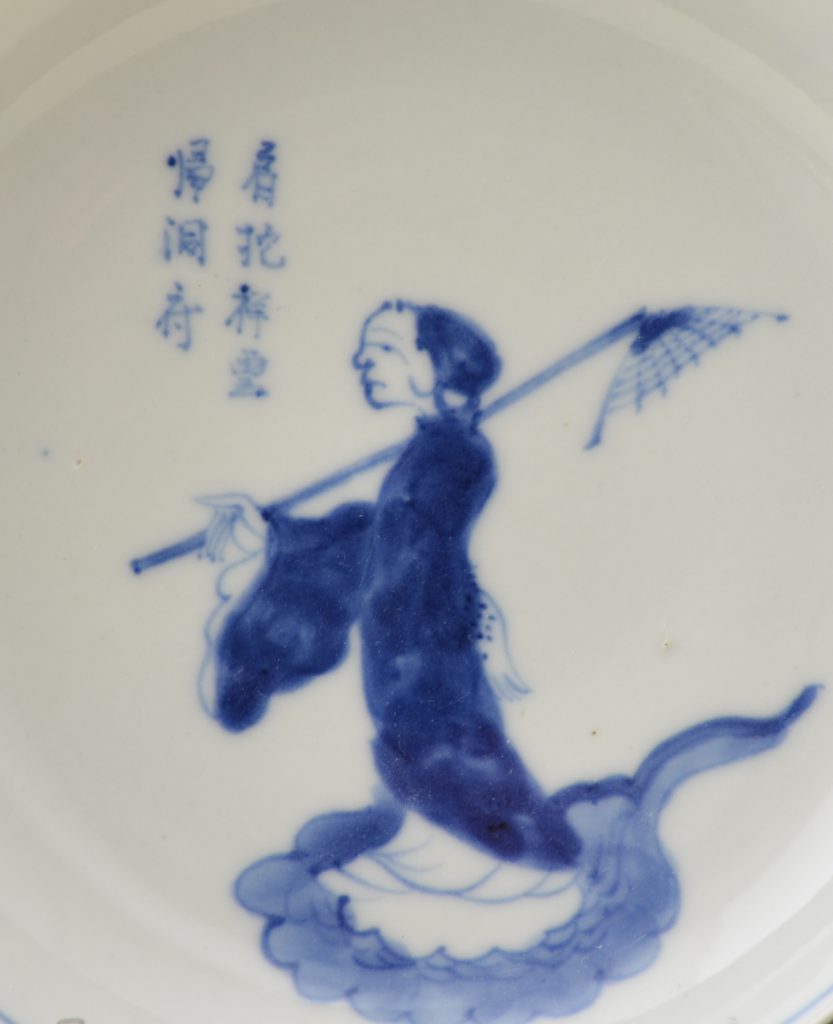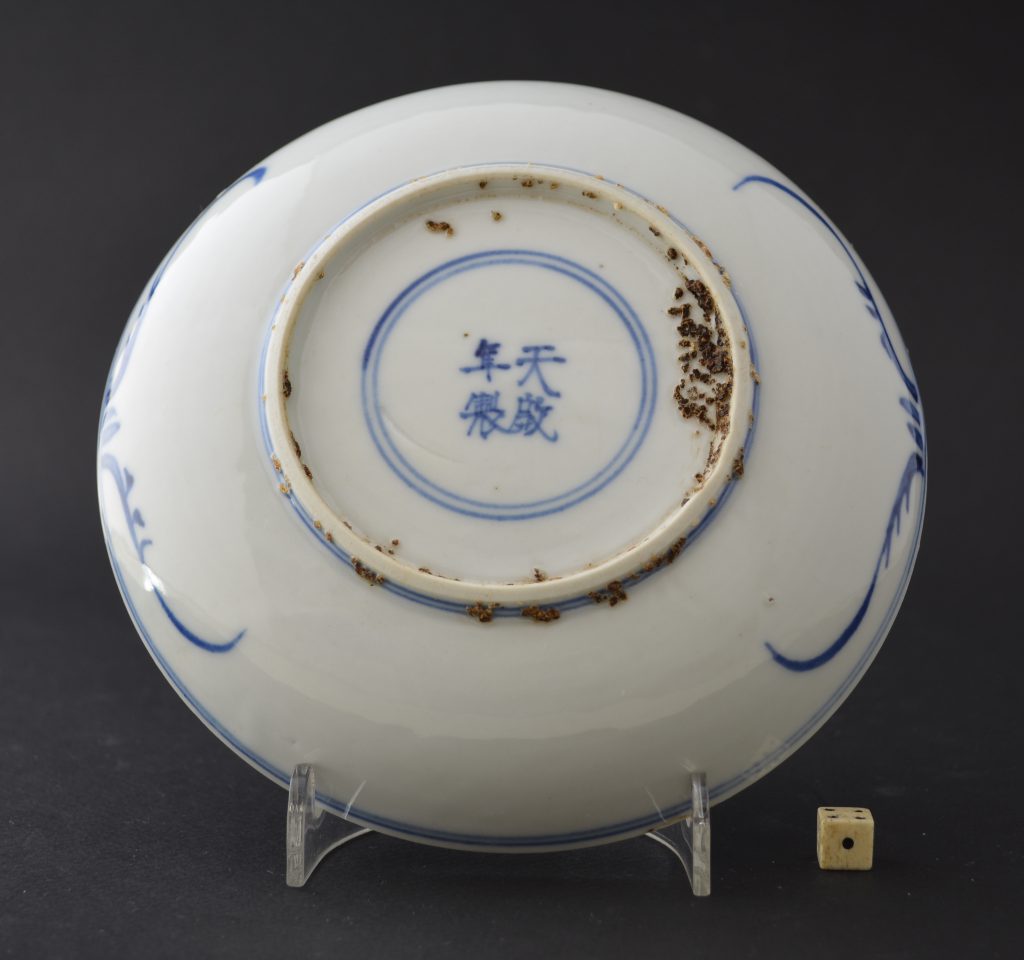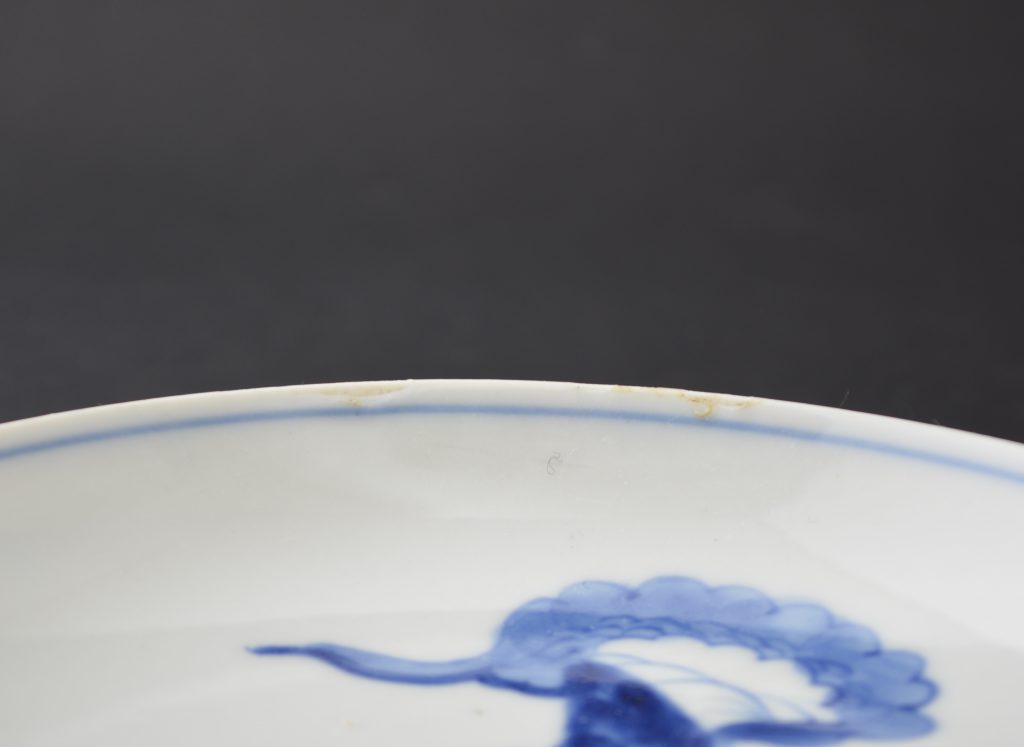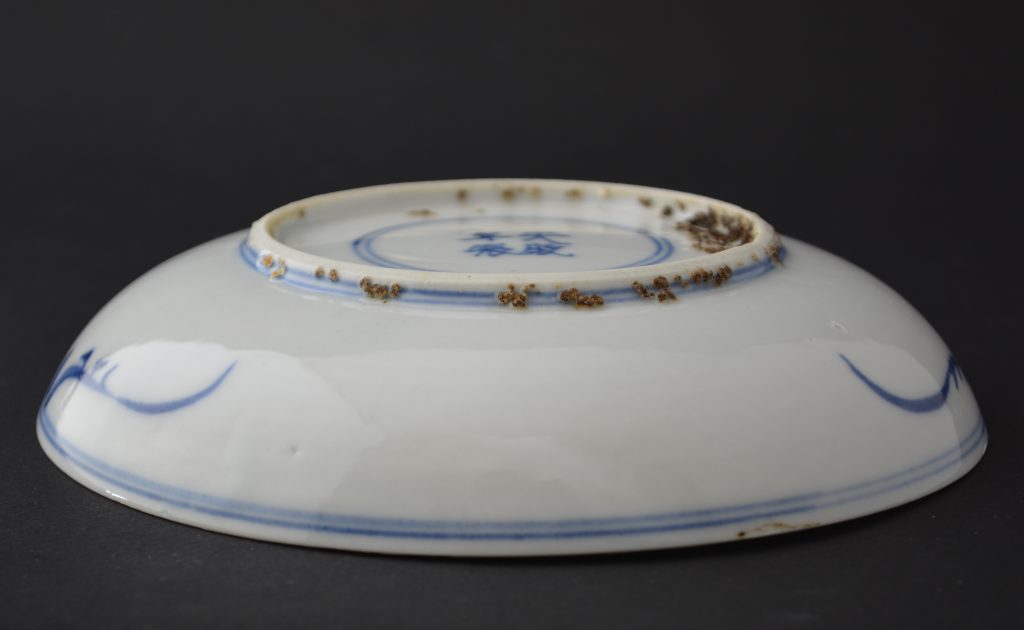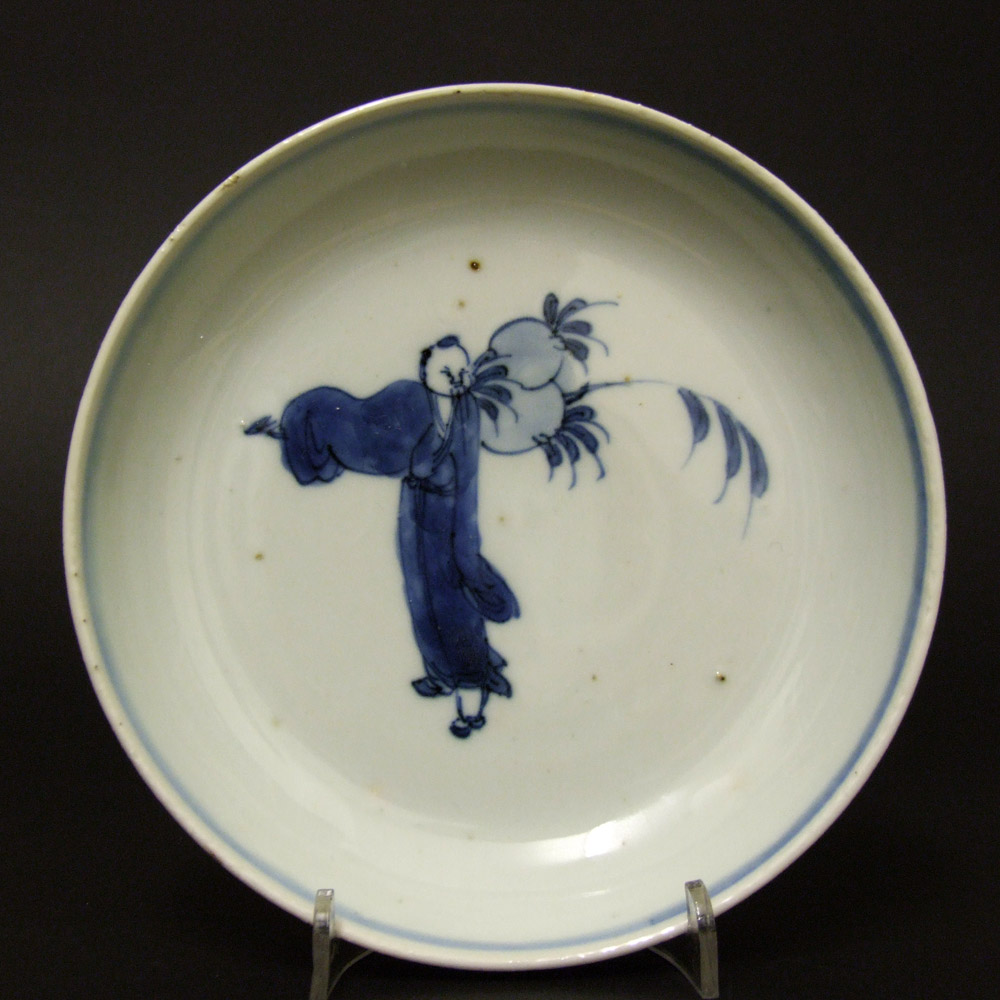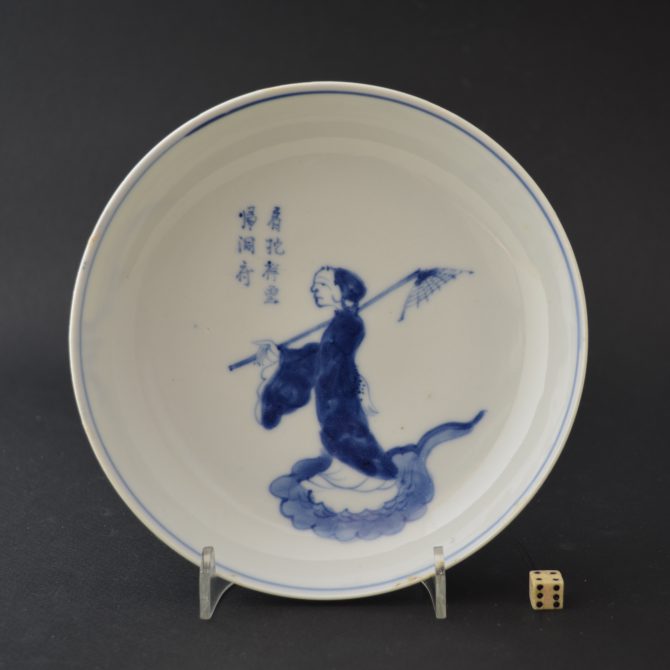
A Rare Ming, Tianqi Mark and Period Porcelain Dish 1621 – 1627
A rare inscribed Ming porcelain dish, Tianqi mark and of the period (1621-1627). This Ko-Sometsuke porcelain dish made at the end of the Ming dynasty for the Japanese market is painted with a figure on a cloud with an attribute over her shoulder, perhaps meant to represent the immortal Lan Caihe. Above her is a seven-line poem. The base with a four-character Tianqi non-imperial mark.
SOLD
- Condition
- In excellent condition, there are three small areas where the glaze hasn't adhered to the rim. This could be the result of of fingers on the rim as it was glazed or perhaps the glaze has crawled because there was a small amount of grease on the rim. Minute frit to the back rim, almost not visible.
- Size
- Diameter : 14.9 cm (6 inches)
- Provenance
- From a Private English Collection of 17th and 18th Century Chinese and Japanese Porcelain.
- Stock number
- 131
- References
- For two polychrome Tianqi mark and of the period (1621-1627) dishes with a variant of this design see : The Peony Pavilion Collection, Chinese Tea Ceramics For Japan (c.1580-1650), Christie's London, 12th June 1989.page 72, lot 309.
Information
Tianqi Mark and Period Porcelain 1621 – 1627 :
The disintegration of the Ming dynasty during the first decades of the 17th century saw enormous changes in porcelain production at Jingdezhen. Lack of imperial control combined with disinterest in Imperially commissioned porcelain led to a relaxation in the marking of ceramics. Reign marks which could not be used unless for an imperial order were now being used on some non-Imperial porcelain, especially blue and white porcelain made for export to Japan. During the Tianqi period the four character mark of of the period occurs on occasion, but rarely does the six character mark of Tianqi. These marks are non-Imperial, that is to say they are Minyao (popular ware).
Ko-Sometsuke :
Ko-Sometsuke, meaning `Old Blue and White` is a term used to describe Chinese blue and white porcelain made for Japan. This late Ming porcelain was made from the Wanli period (1573-1620) and ended in the Chongzhen period (1628-1644), the main period of production being the 1620`2 and 1630`s. The porcelain objects produced were made especially for the Japanese market, both the shapes and the designs were tailored to Japanese taste, the production process too allowed for Japanese aesthetics to be included in the finished object. Its seams firing faults were added, repaired tears in the leather-hard body were too frequent to not, in some cases, be deliberate. These imperfections as well as the fritting Mushikui (insect-nibbled) rims and kiln grit on the footrims all added to the Japanese aesthetic. The shapes created were often expressly made for the Japanese tea ceremony meal, the Kaiseki, small dishes for serving food at the tea ceremony are the most commonly encountered form. Designs, presumably taken from Japanese drawings sent to China, are very varied, often using large amount of the white porcelain contrasting well with the asymmetry of the design.
The Eight Immortals :
The Eight Immortals are a group of legendary Xian, immortals or transcendents in Chinese mythology. Each Immortals power can be transferred to a power tool that can give life or destroy evil. Together, these eight tools are called `Covert Eight Immortals`. Most of them are said to have been born in the Tang Dynasty or Song Dynasty. They are revered by the Taoists, and are also a popular element in the secular Chinese culture. They are said to live on Penglai Mountain-Island. The Immortals are : Immortal Woman He (He Xiangu),Royal Uncle Cao (Cao Guojiu),Iron-Crutch Li (LiTieguai),Lan Caihe,Lü Dongbin, (leader)Philosopher Han Xiang (Han Xiang Zi),Elder Zhang Guo(Zhang Guo Lao),and Zhongli Quan.
A Tianqi Mark and Period (1621-1627) Ko-Sometsuke Dish Made for the Japanese Market.
Painted in Blue and White. This Late Ming Porcelain Dish Depicts the Immortal Zhang Guo Holding Peaches.
